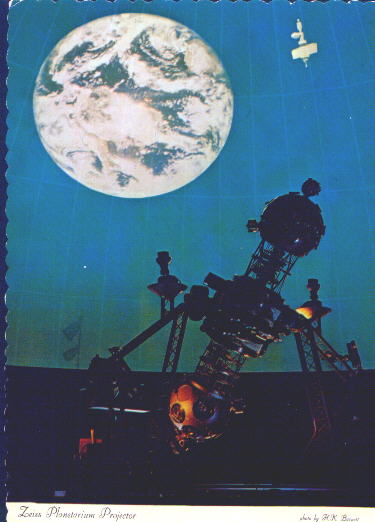
By Francis G. Graham, Professor Emeritus of Physics, Kent State University
Reporting for SpaceWatchtower
One fine day on Mars, Opportunity, a robotic mobile space probe from Planet Earth--from a nation called America--was taking images of the surrounding rocks, controlled as it was by geologists. So far, nothing seems unusual, since geologists like rocks and want to take pictures of them. However, it appears one of the rocks previously omitted seems to have wanted to get in on the photo. Hold on. This is going to shock you.
The geologists at JPL have called the rock Pinnacle Island, but it looks like a jelly donut and is about the same size. Opportunity, which has some analysis capability, determined it is a very unusual rock indeed; the center "jelly" is made of sulfur, magnesium, and manganese and a whole bunch of other things of that sort, reminding me of the manganese nodules at the bottom of the oceans of Planet Earth. Yet it is different from them also.
But what really got everyone going is how it got there, being that it clearly was NOT there 12 Martian days before. Geologists are used to rocks not moving around, and it surprises them when one does.
"It's about the size of a jelly doughnut," Exploration Team leader Steven Squyres said in a talk reported by Ian O'Neill of Discovery News. "It was a total surprise, we were like 'wait a second, that wasn't there before, it can't be right. Oh my God! It wasn't there before!' We were absolutely startled." He continued, "I don't know what any of this means. We're completely confused, everybody on the team is arguing and fighting. We're having a wonderful time!"
More with possible explanations:
Link >>> http://buhlplanetarium2.tripod.com/weblog/spacewatchtower/fgg/THE_ROCK_THAT_WALKED_IN_Revised.pdf
Source: Francis G. Graham, Professor Emeritus of Physics, Kent State University; former Planetarium Lecturer & Observatory Observer, Pittsburgh's original Buhl Planetarium and Institute of Popular Science; Steering Commitee Member, Friends of the Zeiss;
Reporting for SpaceWatchtower, a project of Friends of the Zeiss.
2014: 75th Year of Pittsburgh's Buhl Planetarium

Want to receive SpaceWatchtower blog posts in your inbox ?
Send request to < spacewatchtower@planetarium.cc >..
gaw
Glenn A. Walsh, Project Director,
Friends of the Zeiss < http://buhlplanetarium.tripod.com/fotz/ >
Electronic Mail - < gawalsh@planetarium.cc >
About the SpaceWatchtower Editor/Author: < http://buhlplanetarium.tripod.com/#GAW >
SpaceWatchtower Blog: < http://spacewatchtower.blogspot.com/ >
Also see: South Hills Backyard Astronomers Blog: < http://shbastronomers.blogspot.com/ >
Barnestormin: Writing, Essays, Pgh. News, & More: < http://www.barnestormin.blogspot.com/ >
SPACE & SCIENCE NEWS, ASTRONOMICAL CALENDAR:
< http://buhlplanetarium.tripod.
Twitter: < https://twitter.com/spacewatchtower >
Facebook: < http://www.facebook.com/pages/
Author of History Web Sites on the Internet --
* Buhl Planetarium, Pittsburgh:
< http://www.planetarium.
* Adler Planetarium, Chicago:
< http://adlerplanetarium.
* Astronomer, Educator, Optician John A. Brashear:
< http://johnbrashear.tripod.com >
* Andrew Carnegie & Carnegie Libraries:
< http://www.andrewcarnegie.
* Civil War Museum of Andrew Carnegie Free Library:
< http://garespypost.tripod.com >
* Duquesne Incline cable-car railway, Pittsburgh:
< http://inclinedplane.tripod.
* Public Transit:
< http://andrewcarnegie2.tripod.
How's the wind out there on Mars, I wonder?
ReplyDeleteYes, apparantly wind does exist on Mars. Of the 6 possible explanations on buhlplanetarium2.tripod.com's site, wind is never mentioned, except once, which I found amusing:
ReplyDelete"Theories, theories, myriads upon myriads of them, streamed over me like wind-borne
leaves, like the contents of some titanic paper-factory flung aloft by the storm, like
dust-clouds in the hurricane advance of the mind."
Yeah: "wind -borne" is a major clue, right there, I'd wager.
Here's a link to a NASA report discussing wind on Mars
ReplyDeletehttp://www.nasa.gov/multimedia/podcasting/curiosity20121115.html
Reply Posted on Behalf of Francis G. Graham, Professor Emeritus of Physics, Kent State University ---
DeleteI think you have another theory, Thorns. Ordinarily, the winds on Mars cannot move centimeter sized rocks around, because the density of the atmosphere of Mars is very low, so even with the famed Martian windstorms this does not happen. But if the rock was loaded with vessicles, like pumice, at some point the wind could move it. The question is can enough voids be in a realistic rock to enable this. Something to consider!! Thorns you have thought of a possibility that the Squyres scientific team did not consider, or if they did, they did not list it. Good job.